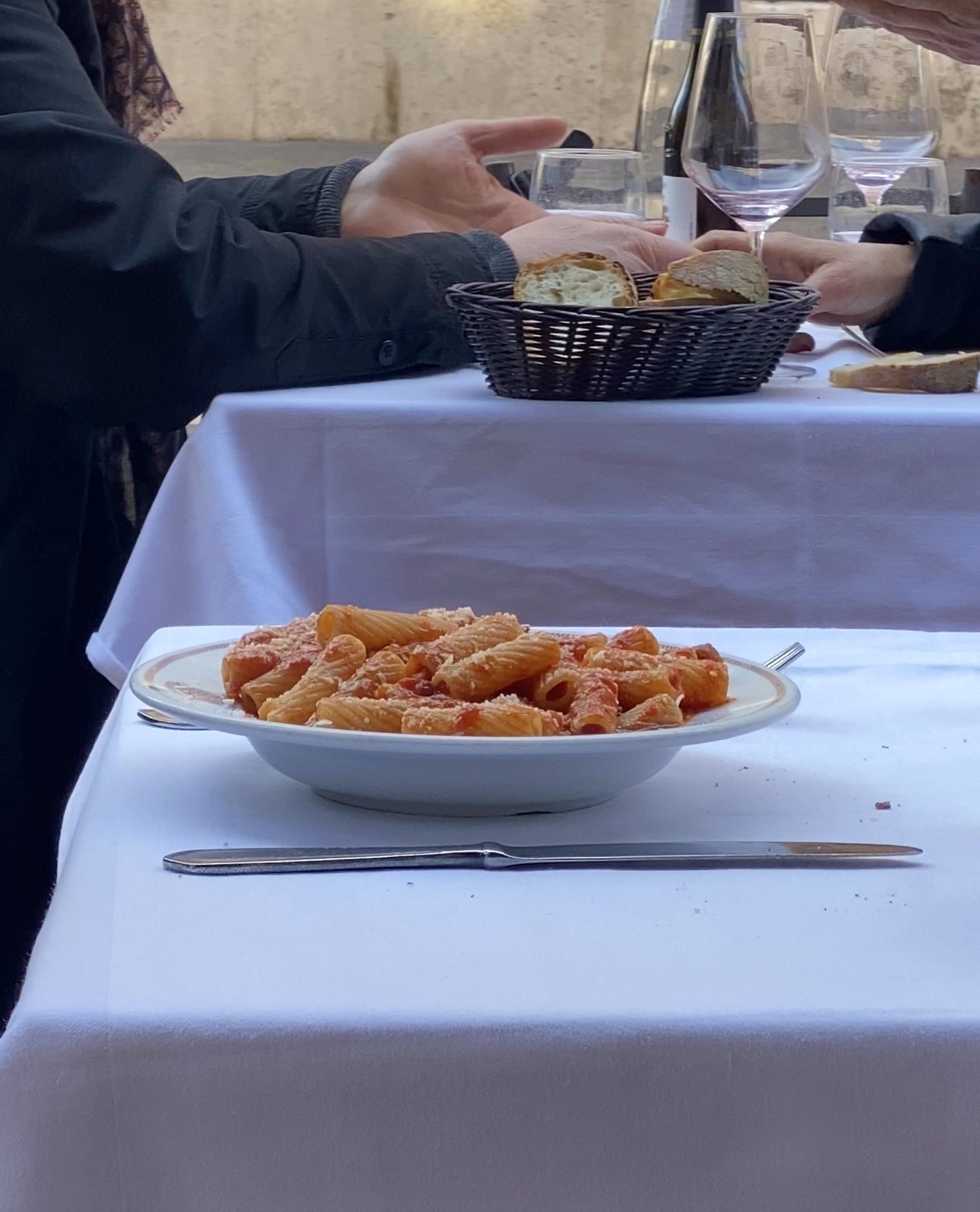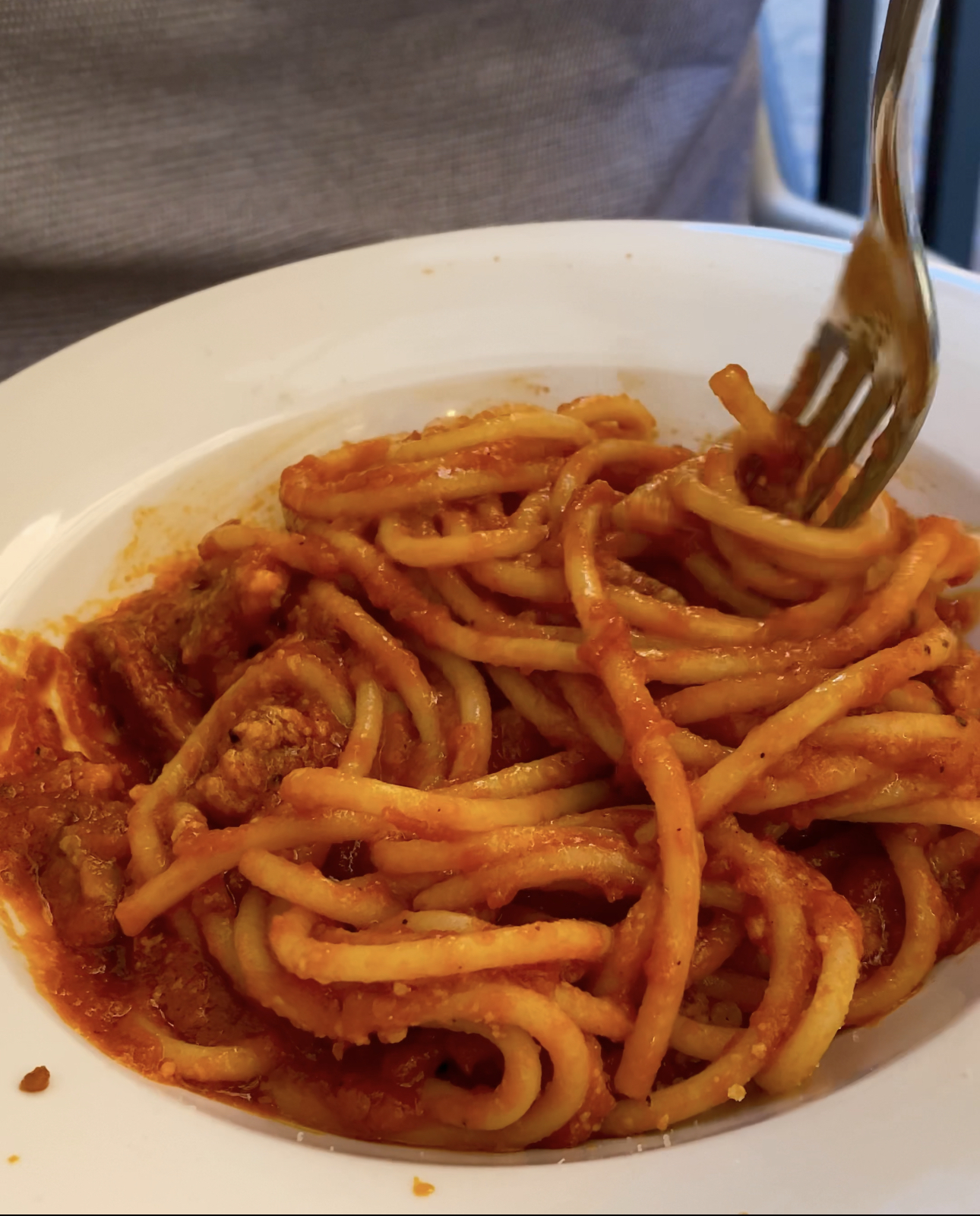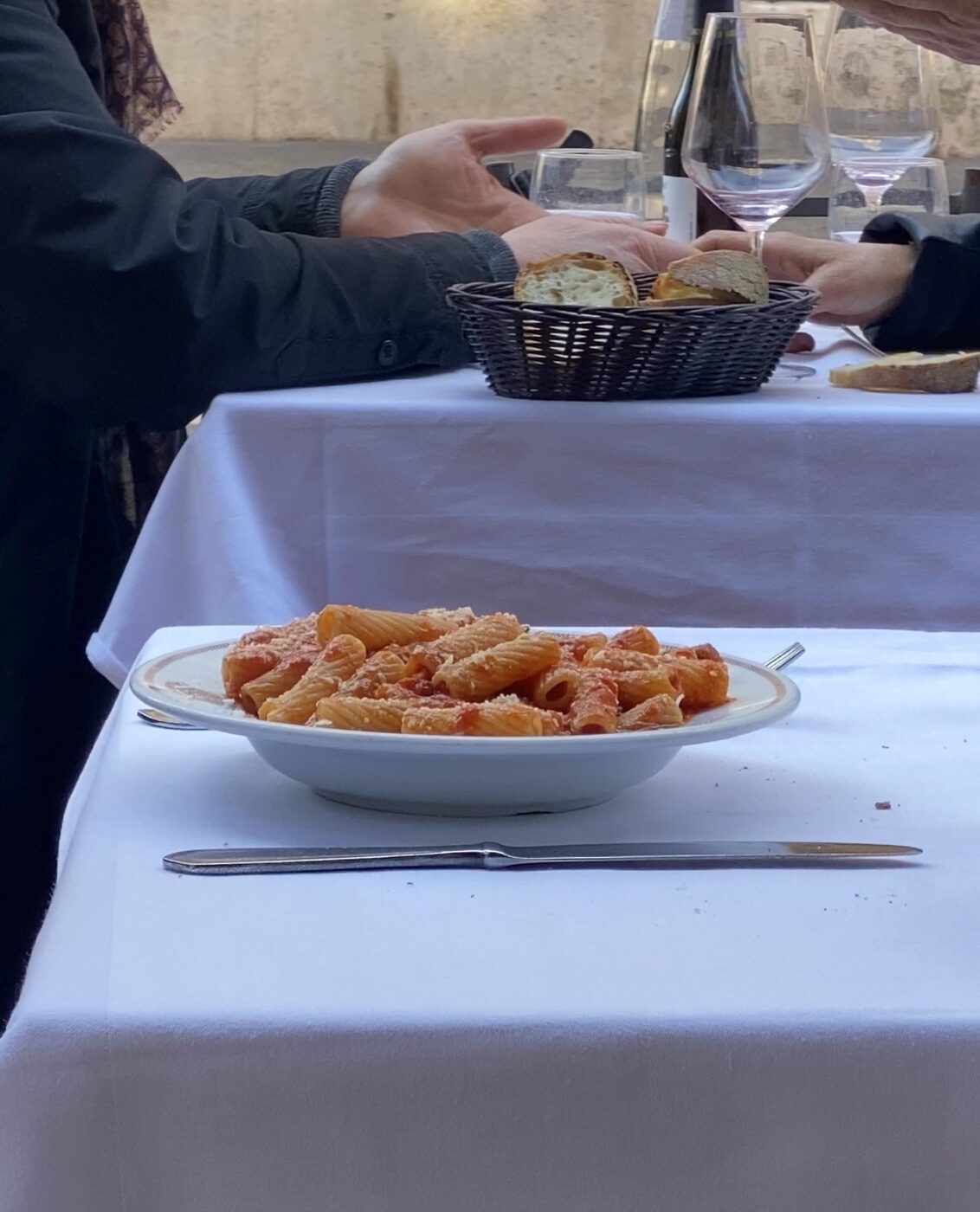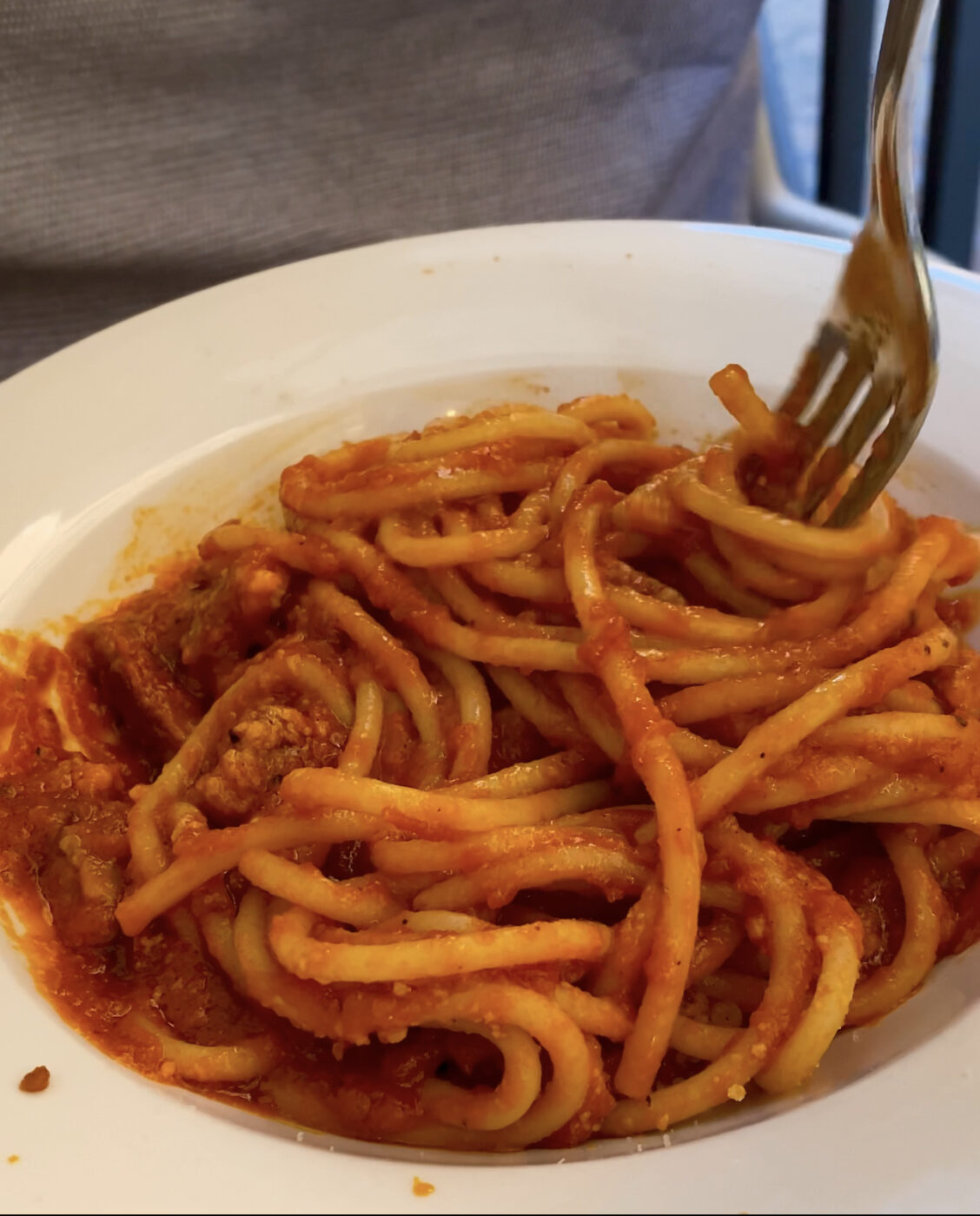If you’re reading this, you likely know that we take our food very, very seriously at Italy Segreta. It’s not uncommon to find us dissecting recipes and arguing about the optimal variety of tomato, or what the best way to cook broccoli is. And of course, when it comes to the infinite and minute variations on classic Italian dishes, the atmosphere at the office can get downright heated. In order to settle it once and for all, we’ll be taking the time to workshop and taste-test beloved recipes from Italy’s different cities and regions, in the aim of agreeing on the one, ultimate, reigning recipe. We’re not saying this is the most historically accurate or traditional way of cooking these recipes–there are plenty of other places you can go for those methods–this is just our highly opinionated editorial board’s collective favorite way. Approved by both the Italian and international contingents.
Guanciale, pecorino, pomodoro, e basta. Bucatini all’Amatriciana is one of Rome’s four most iconic pastas, but, as the only one with tomato, it’s both the lightest and our team’s undisputed favorite. The dish is the child of pasta alla gricia, or griscia, which is said to originate from shepherds living in the village of Grisciano and is made with just guanciale and pecorino. In 1592, the town of Amatrice near Rome was burnt down by the Spanish, and survivors fled south to Naples where the hottest culinary trend was just taking hold: tomatoes. Brought to the peninsula by the aforementioned Spanish conquistadors at the beginning of this century, the tomato was originally deemed poisonous, but the working class was having none of it and found the fruit to be cheap, versatile, and delicious. About a century later and back in their rebuilt town, people of Amatrice began to include tomatoes into their gricia, influenced by their hip southern friends.
The first recorded recipe for amatriciana comes from an 1861 cookbook titled L’Apicio Moderno by Francesco Leonardi, cook at the court of Pope Pius VII, who first made the dish for a banquet in honor of Austrian Emperor Francis I. Since then, the recipe has remained basically unchanged–avoid any that call for onions, garlic, or olive oil, and under no circumstances can you substitute the guanciale with pancetta. Bucatini is the most traditional shape, but some of our team are ready to take up arms for rigatoni as the superior shape. Whichever shape you choose, here’s a recipe for Rome’s sauciest pasta:
ITALY SEGRETA’S BUCATINI ALL’AMATRICIANA
Serves 4
INGREDIENTS
- 350 g of bucatini (or spaghetti or rigatoni, we guess)
- 150 g guanciale
- 75 g Pecorino di Amatrice (or Pecorino Romano DOP), grated
- 8-10 fresh, ripe, and firm tomatoes
- 1 tablespoon of extra virgin olive oil
- A splash of dry white wine
- Salt, to taste
PREPARATION
- Blanch the tomatoes in salted water for one minute. Peel the skin, cut into quarters, and set aside.
- Remove the pepper rind and cut the guanciale into long slices, then into smaller strips (not cubes).
- Place a non-stick pan onto low heat. Cook the guanciale in its own fat until the grease is translucent. Be careful not to burn it.
- Collect with a fork or slotted spoon and set aside, leaving the fat in the pan.
- Turn up the heat and add a splash of dry white wine.
- Add the tomatoes and a pinch of salt to the pan, and cook on low heat for 15 minutes.
- Once cooked, mash the tomatoes with a fork until pulpy. Continue to cook until all the liquid has evaporated.
- Bring a large pot of salted water to a boil.
- Add the pasta. Cook until al dente (about two minutes less than package directions).
- Drain and add directly to the frying pan. Toss with the sauce over high heat.
- Add reserved guanciale and Pecorino, and toss some more.
- Serve hot with extra Pecorino on top!



